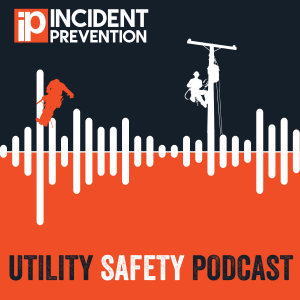
Utility Safety Podcast by Incident Prevention Magazine
Business & Economics Podcasts
Come listen to an extension of some of the excellent utility safety & ops safety content published in Incident Prevention magazine. Dive deeper into insightful safety topics by hearing interviews with the some of the best and brightest minds in the industry! Learn more about Incident Prevention magazine at incident-prevention.com
Location:
United States
Description:
Come listen to an extension of some of the excellent utility safety & ops safety content published in Incident Prevention magazine. Dive deeper into insightful safety topics by hearing interviews with the some of the best and brightest minds in the industry! Learn more about Incident Prevention magazine at incident-prevention.com
Language:
English
Contact:
8154591796
Website:
https://incident-prevention.com/
Union Care Solutions - A Conversation on Mental Health in the Electrical Industry
Duration:00:29:45
Utility Safety Podcast - Deep Dive - Improving Rope Safety in Energized Environments
Duration:00:16:36
The Future of PPE - How Twiceme Technology Is Revolutionizing PPE for Utility Workers
Duration:00:23:55
Rethinking Risk: Safety Culture, Risk Tolerance, and Relationship-Driven Leadership - Mark Taylor, CUSP
Duration:00:45:44
Built from the Underground Up - Mark Savage’s Mission to Train the Next Generation of Utility Workers
Duration:00:38:09
Bringing Electrical Safety Home - A Conversation with Jennifer LeFevre of Electrical Safety Foundation International
Duration:00:17:58
Voice of Experience: Battling the Storm - Hurricane Season Lessons for Linemen with Danny Raines, CUSP
Duration:00:37:52
Utility Safety Podcast - Industrial Athletes - Keeping Utility Workers Safe in Extreme Heat
Duration:00:44:00
Silencing the Noise: Creating a Culture of Actionable Safety and Synchrony with Bill Martin, CUSP
Duration:00:42:03
Utility Safety Podcast: Deep Dive: Bucket Truck Safety: OSHA Standards and Other Considerations Written by Danny Raines, CUSP
Duration:00:11:40
Utility Safety Podcast - Visual Intelligence for a Safer Grid: Tthe Future of Utility Inspections
Duration:00:24:31
Built In, Not Bolted On with Doug Hill, CUSP - Rethinking Job Briefs - Why the End of the Day Matters Most
Duration:00:19:10
Utility Safety Podcast - Deep Dive - The Good Shepherd - Leading with Safety and Trust
Duration:00:11:34
The Invisible Force - Rewiring Safety Through Human Connection with Brent Jeffries & Billy Martin, CUSP
Duration:00:29:31
Built In, Not Bolted On with Doug Hill, CUSP - Why Safety Programs Succeed or Fail David McPeak, CUSP
Duration:00:32:11
Safety by Design - Empowering Leadership and Employee Involvement with Pam Tompkins CSP, CUSP
Duration:00:36:50
Deep Dive - Optimizing Arc Flash Protection: The Crucial Role of Layered Clothing Written By Derek Sang, CSHEP, QSSP
Duration:00:12:41
Built In, Not Bolted On with Doug Hill, CUSP - Protecting Our Workforce Through Safety Culture
Duration:00:25:43
Utility Safety Podcast - 10 New Trends That Keep Me Up at Night with Shawn Galloway
Duration:00:41:15
Utility Safety Podcast - Deep Dive - Equipotential Grounding - Lessons Learned in the Field Written by Dwight Miller, CLCP, CUSP
Duration:00:13:13